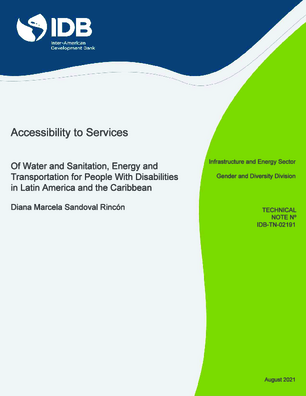Accesibility to Services of Water and Sanitation, Energy and Transportation for People with Disabilities in Latin America and the Caribbean
Date
Aug 2021
Gaps in accessibility to public services depends on cultural, economic, social, and geographical contexts, among others, as well as the type of disability that a person may have. Depending on these variables, deep and/or complex barriers will be presented. The document includes research and case studies on the physical, social, and communicational barriers faced by Persons with Disabilities (PwDs) for access to public services in the Infrastructure and Energy sector, specifically in the areas of Water and Sanitation, Energy and Transport. This paper describes the types of barriers (architectural, urban, communicational and electronics), associated with the provision of public services of water and sanitation, energy, and transport. Access barriers and good practices (trough close and international, public, and private companies examples) of accessibility to public PwD services are identified, in order to generate guidelines that minimize and, as far as possible, eliminate accessibility barriers. Finally, the conclusions present the opportunities for improvement that can be implemented to eliminate or reduce barriers to access to public services.




